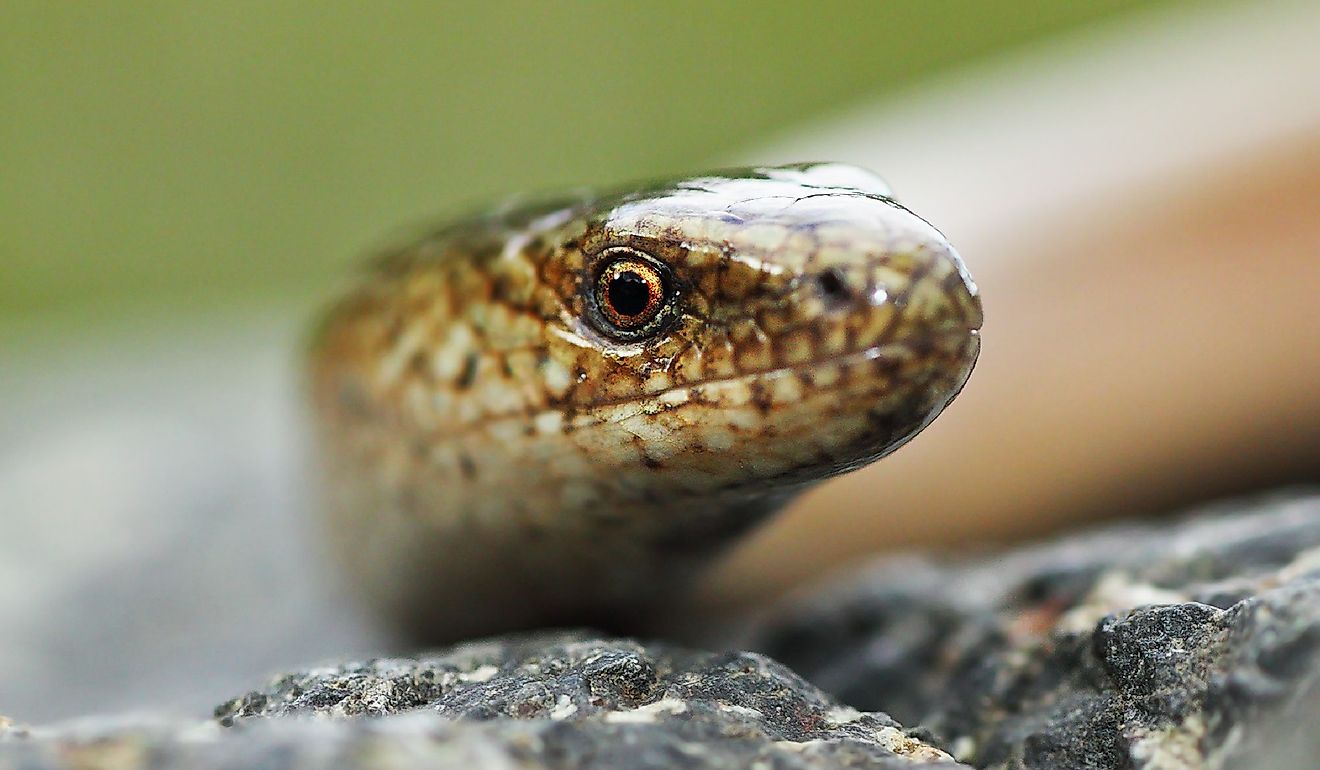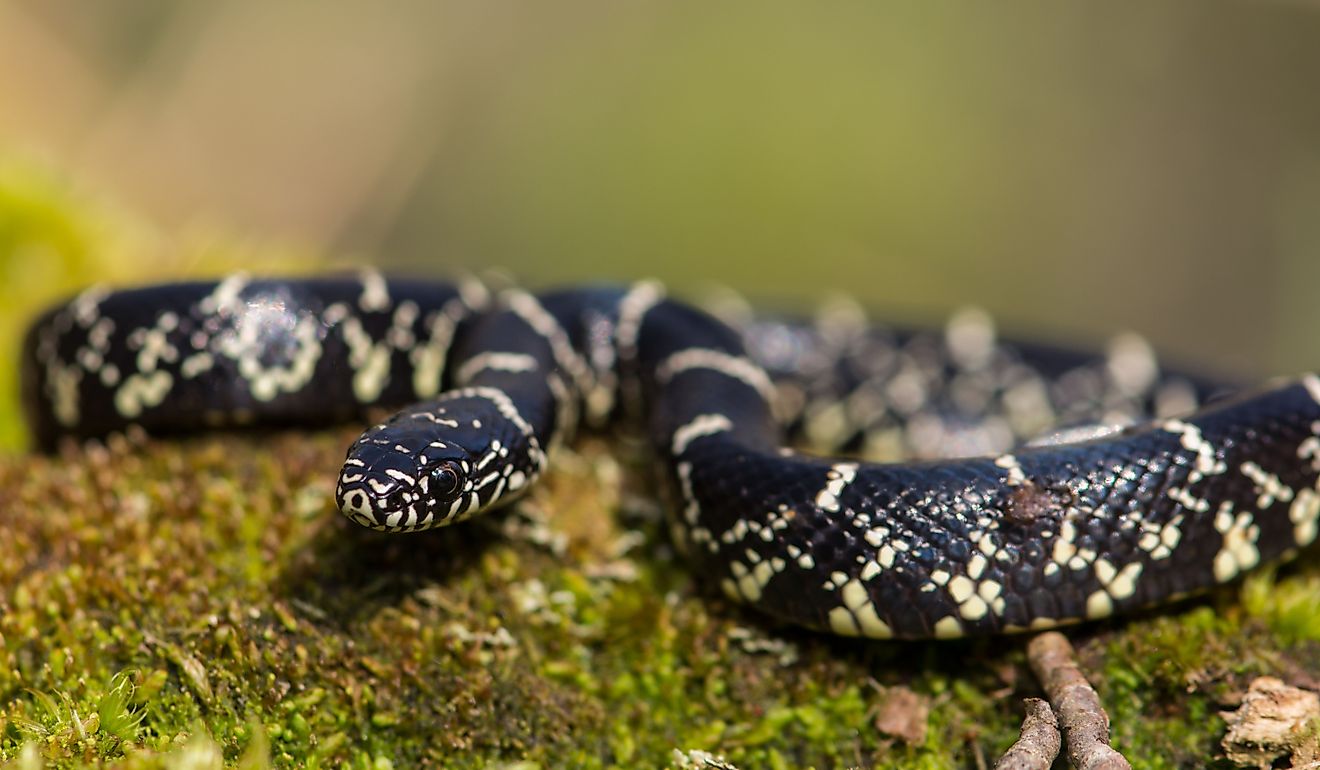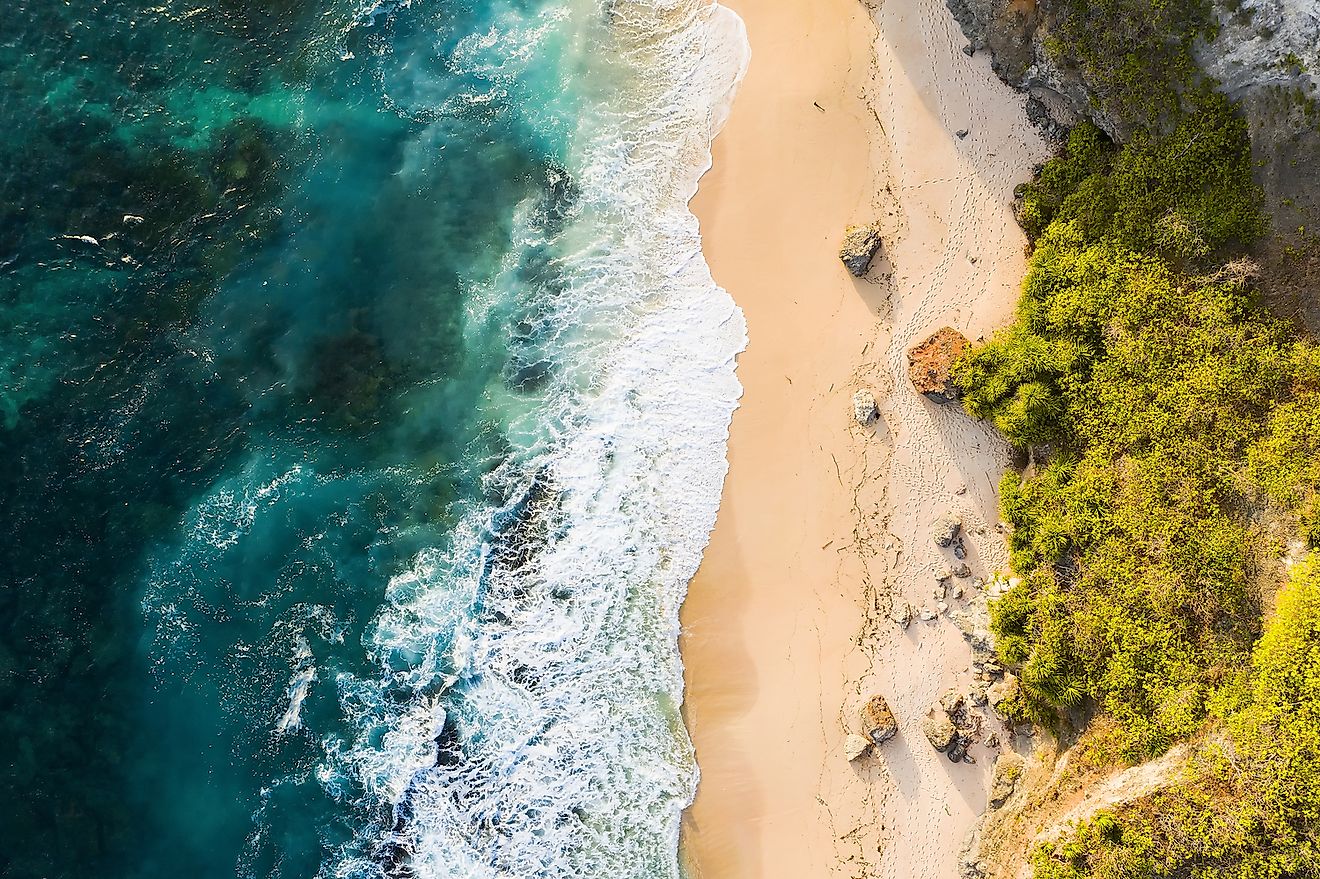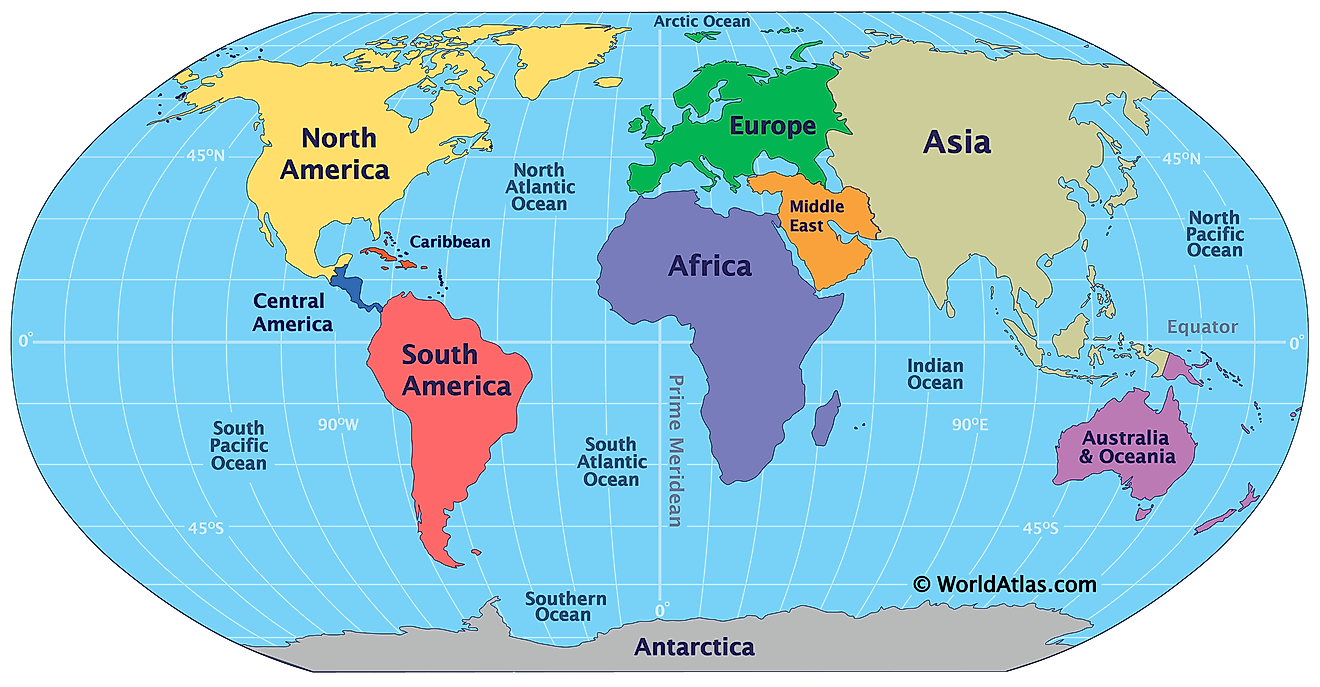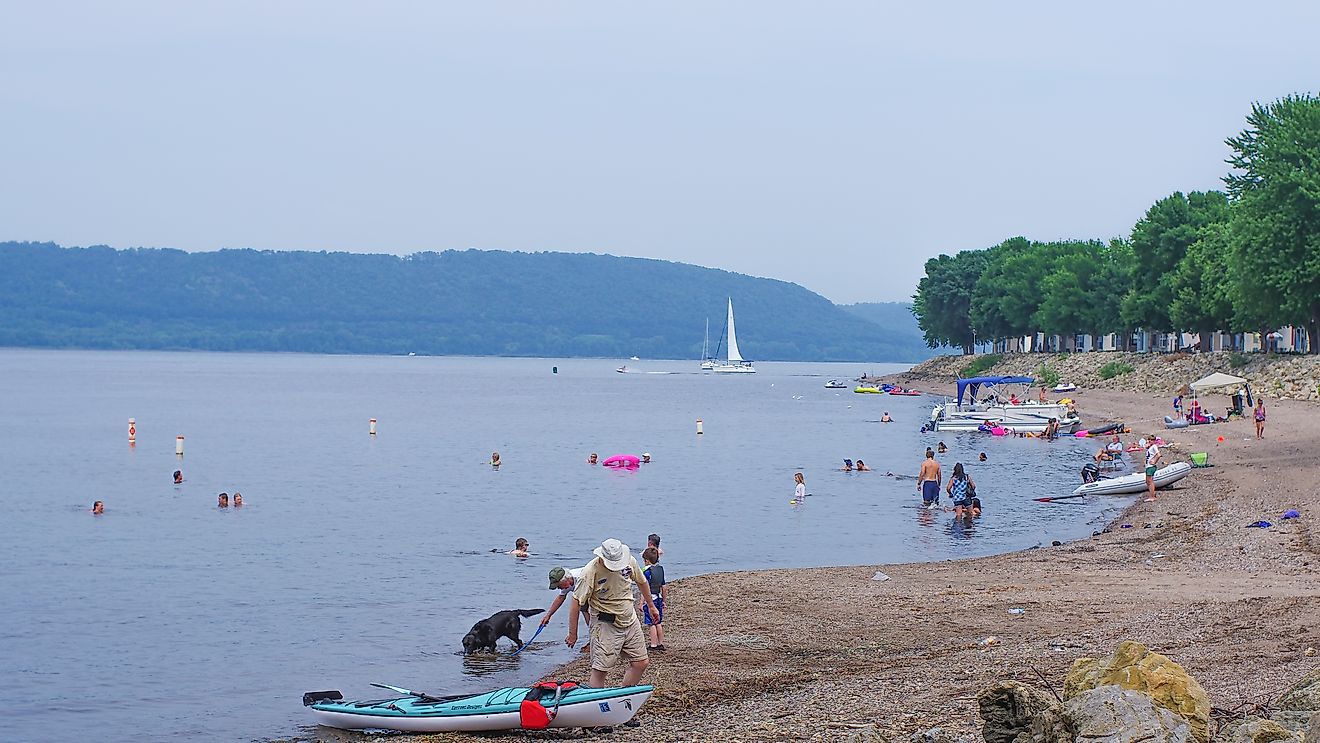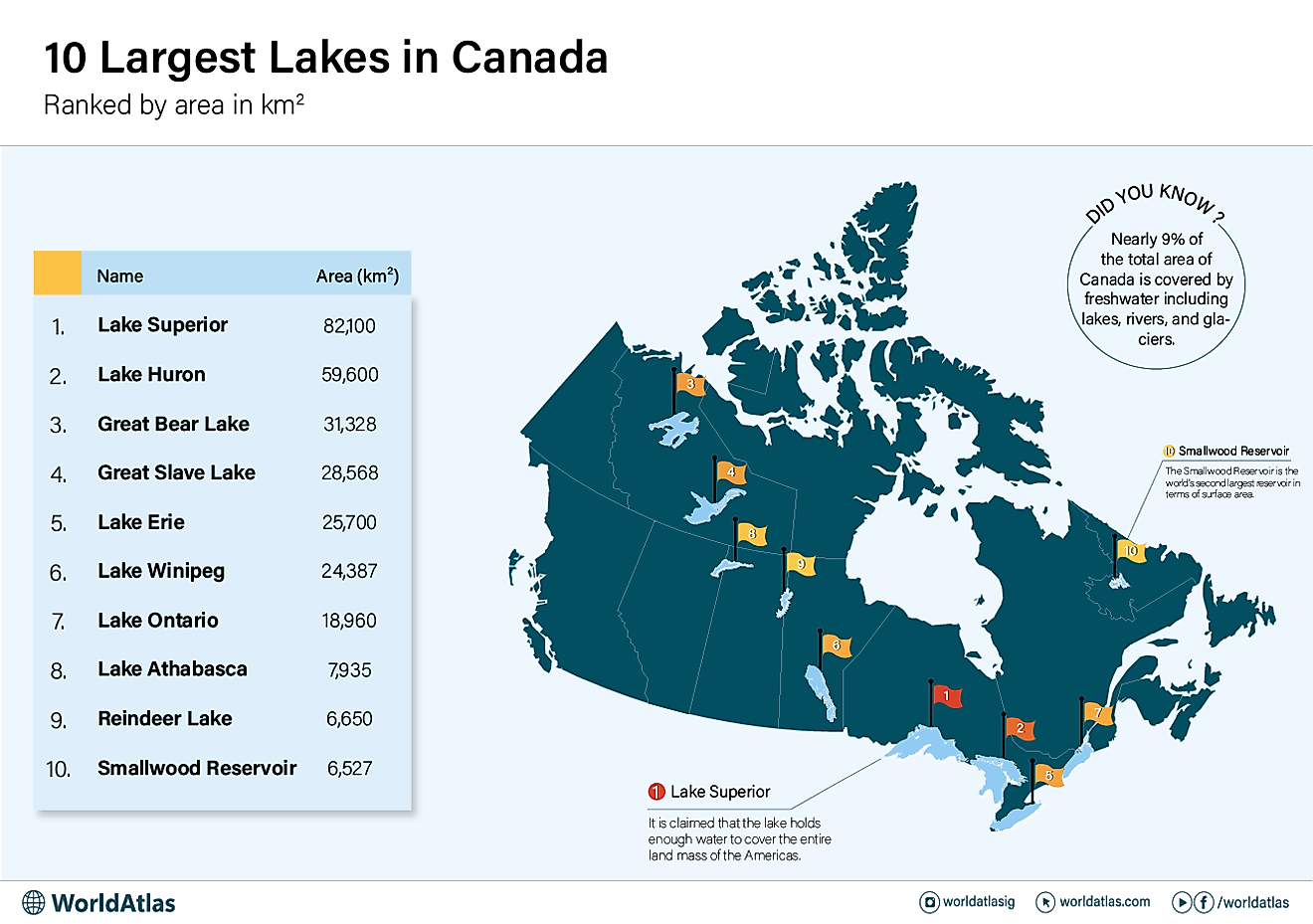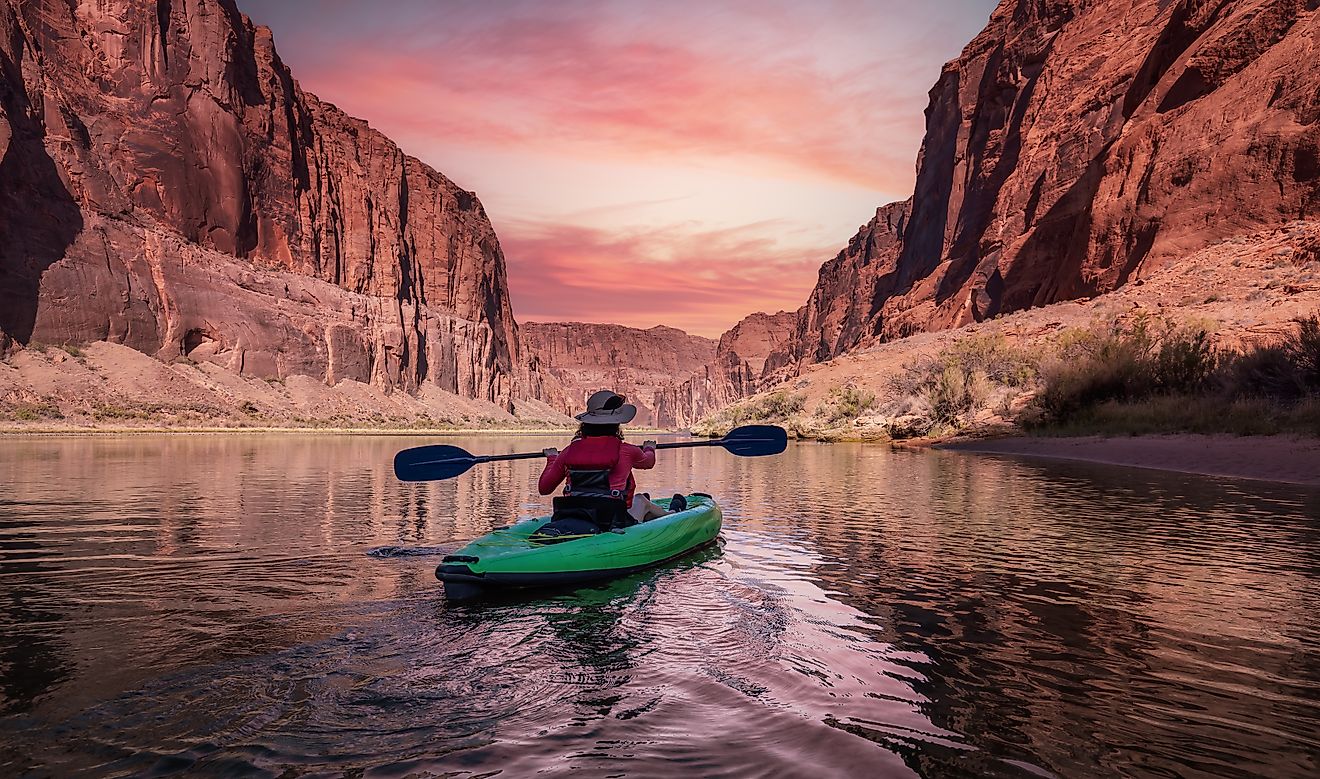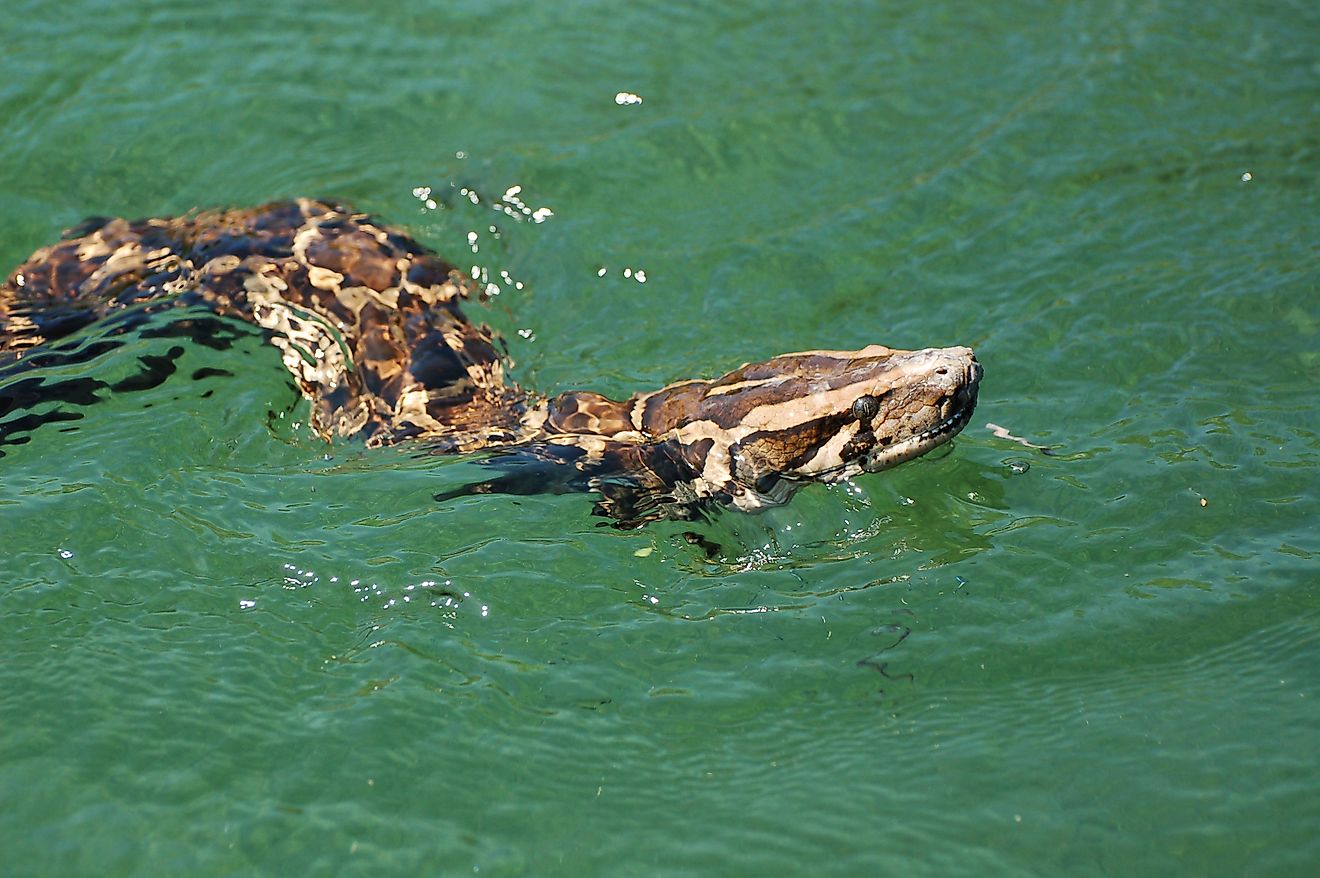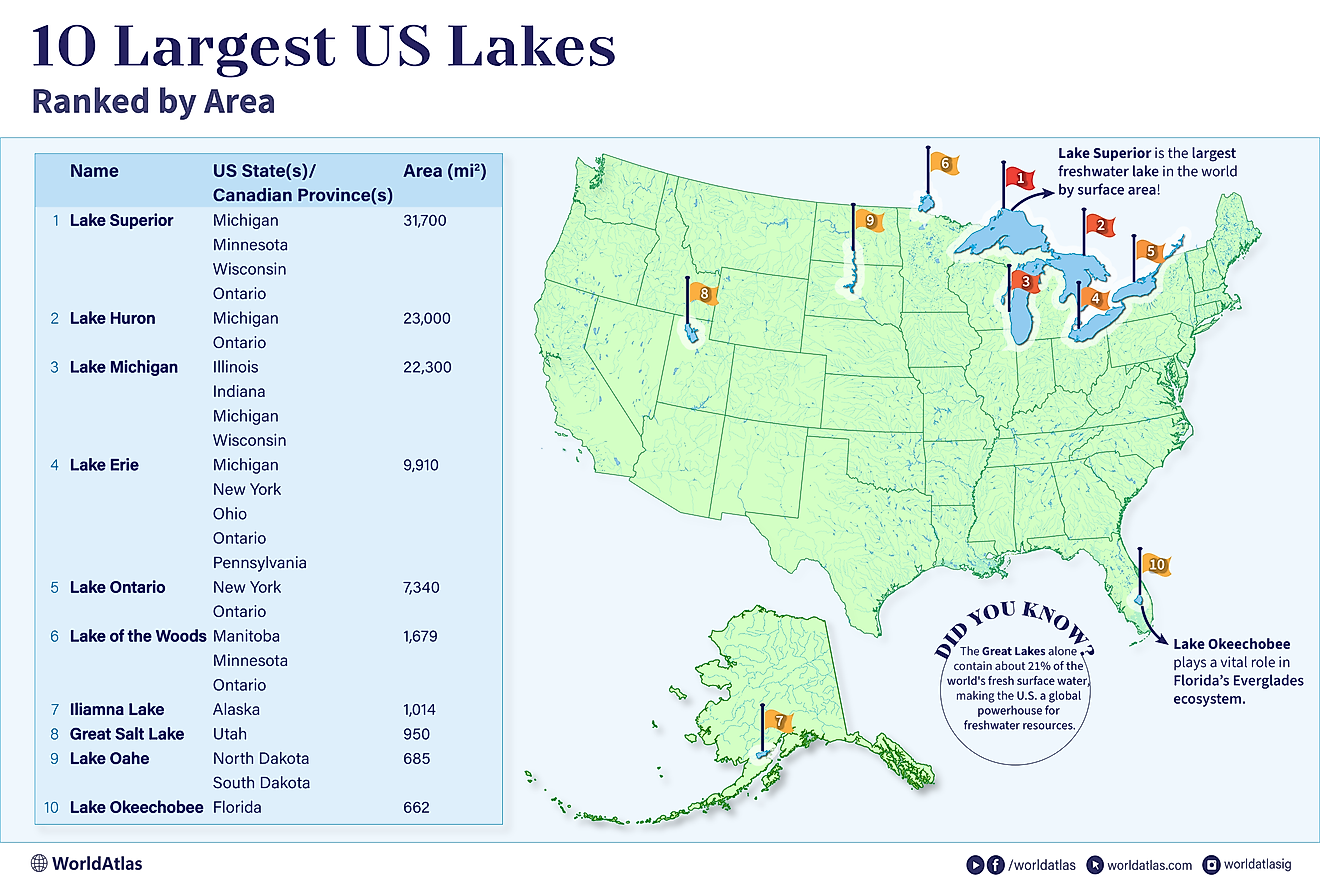
6 Most Snake-Filled Bodies Of Water In Nebraska
Home to grassy prairies, dusty badlands, and shimmering lakes, Nebraska promises many thrills for outdoor adventurers and nature lovers. But they’re not the only ones enjoying the state’s diverse habitats and pristine wilderness. There are 30 snake species in Nebraska, four of which are venomous. The dangerous four are the Copperhead (Agkistrodon contortrix), the Timber Rattlesnake (Crotalus horridus), the Prairie Rattlesnake (Crotalus viridis), and the Massasauga Rattlesnake (Sistrurus tergeminus).
Many of these wild residents like to hang out near bodies of water but don’t let that deter you from taking a dip. Snakes are shy by nature. They typically stay away from humans and will only act aggressively if threatened or surprised. Every year, millions of visitors calmly share the state with its snakes, who are vital to local ecosystems and contribute to the health of their habitats.
Lake McConaughy
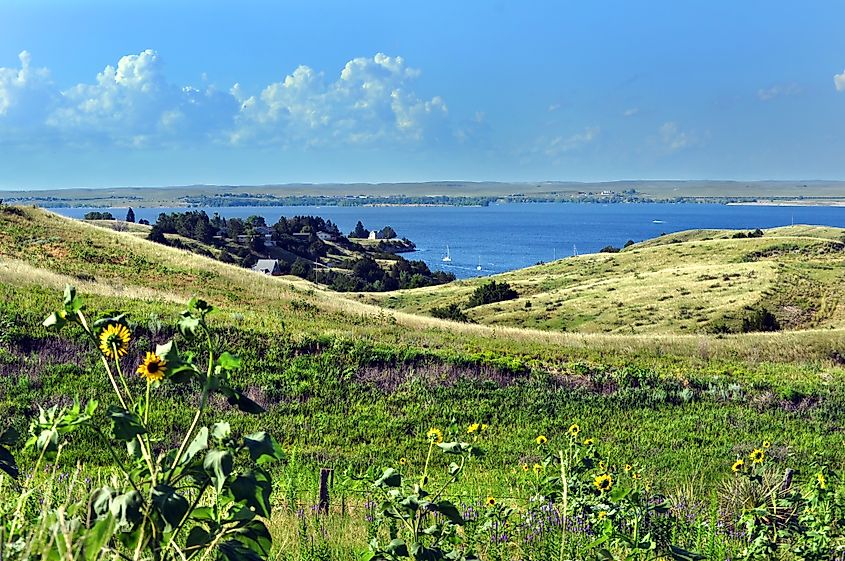
Lake McConaughy, in western Nebraska, is the largest reservoir in the state at 30,000 acres. The centerpiece of the Lake McConaughy State Recreation Area, the reservoir is a popular destination in the summer when you’ll find locals and residents swimming, boating, fishing, or relaxing on the beach.
The recreation area is also a thriving snake habitat, with many species in the mix. These include the Prairie Rattlesnake which prefers rocky areas near the shoreline and the Bullsnake (Pituophis catenifer). The largest snake native to Nebraska, Bullsnakes can grow up to 8 ft long and are known as ‘farmers’ friends’ thanks to their habit of eating rodents that destroy crops. Cedar Point Biological Station, near Lake McConaughy, tracks Bullsnakes in the area to learn more about the elusive species.
Pawnee Lake

In the heart of the Pawnee Recreation Area near Lincoln, the 740-acre Pawnee Lake is a particular favourite with anglers as it is well-stocked with white bass, walleye, largemouth bass, bluegill and catfish. Other activities available in this scenic recreation area include hiking, archery, swimming, boating, and camping.
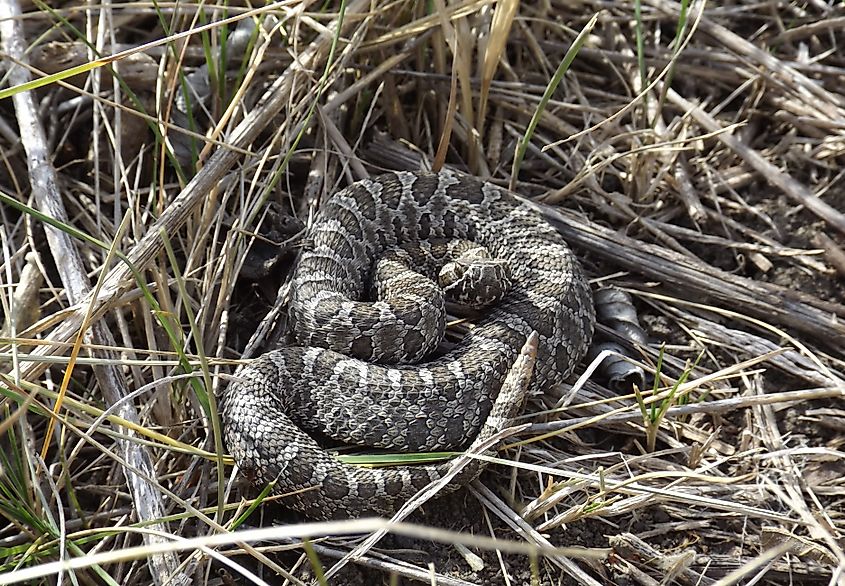
Pawnee Lake has the perfect blend of grassy fields and dense marshes that many snakes love. Pawnee County is home to a variety of species, including Bullsnakes, Massasauga Rattlesnakes, and Common Garter Snakes (Thamnophis sirtalis). You’re most likely to see the latter on your trip to Pawnee Lake. This non-venomous snake is the most common snake in Nebraska and, unlike most snakes, is active all year-round, even on cold days. They vary in color but usually have dark brown or black bodies with a distinctive yellow stripe along their back.
Missouri River
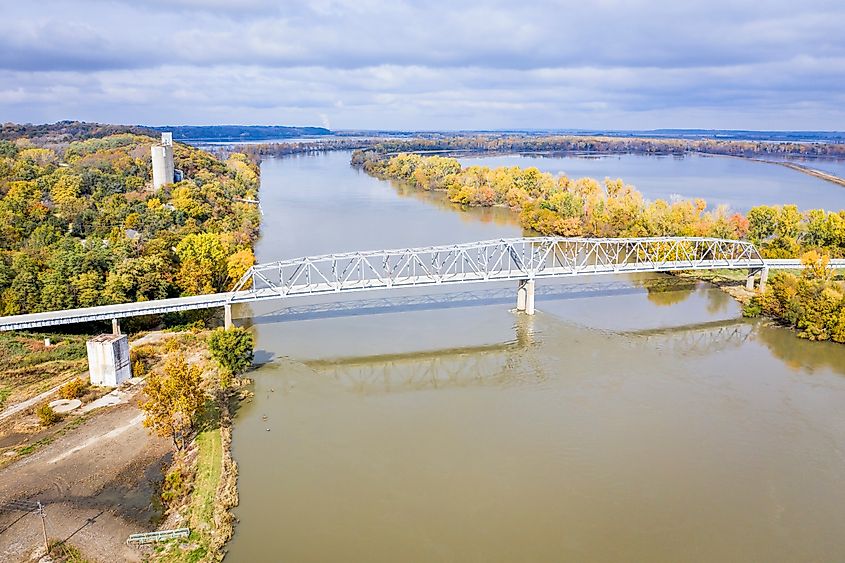
The country’s longest river, the Missouri River, flows through the northeastern side of Nebraska along the border with South Dakota. There are plenty of places in Nebraska to get out on the waters of ‘Mighty Mo’, including Pelican Point State Recreation Area, Riverview State Recreation Area, and Ponca State Park, but one of the most popular is Niobrara State Park, where the Niobrara River and the Missouri River meet.
As well as being the nation’s longest river, the Missouri is also one of its most ecologically important, providing habitats for a wide range of wildlife. There are several snake species in the Missouri National Recreational River area, including the Eastern Hog-nosed Snake (Heterodon platirhinos), the Western Hog-nosed Snake (Heterodon nasicus).
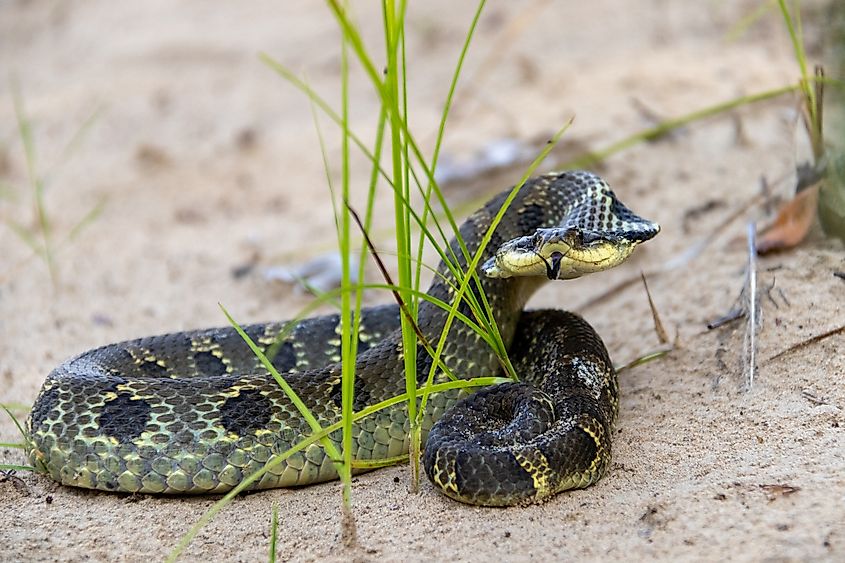
Hog-nosed snakes are easy to spot because of their unusual noses, which resemble an upturned snout. These snakes like areas of sandy soil near bodies of water and have a strange trick. When they encounter a predator, they flip over and hang out their tongue to fool their attacker into thinking they’re dead.
Niobrara River

Aside from its confluence with the Missouri River, the Niobrara is a designated National Scenic River in its own right. The boundary of the river’s protected area starts near the town of Valentine in northern Nebraska and runs east. There is a lot of wildlife in this beautiful and ecologically diverse area, including the 13 snakes native to the Niobrara Valley. These include the Ringneck Snake (Diadophis punctatus), the Eastern Hognose Snake (Heterodon platirhinos), and the Common Garter Snake.

The only venomous species in the Niobrara Valley is the Prairie Rattlesnake. These snakes feed on birds, small mammals, and lizards. They have dark blotches running down their spine and a rattle at the end of their tail which they typically shake as a warning when feeling threatened. Prairie Rattlesnakes are generally found in rocky grasslands or bluffs overlooking the river, so be alert when hiking in these areas. Sightings are rare but you may just come across a rattlesnake sunning itself on the path in the warmer months.
Branched Oak Lake
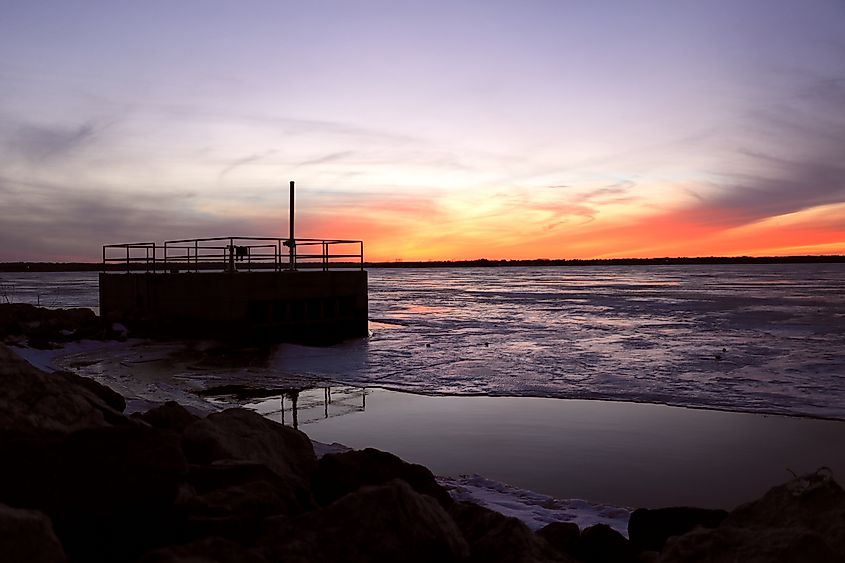
The largest lake in eastern Nebraska, Branched Oak Lake is 1,800 acres and features a marina, two swimming beaches, nine boat ramps, and 49 docks. In the recreation area surrounding the lake, you’ll have your pick of multi-purpose hiking, biking, and horse riding trails meandering through grasslands, forest, and shoreline areas. There are several scenic overlooks offering stunning views over the lakes and perfect for wildlife watching. Keep your binoculars ready, bald eagles have been sighted in the spring.
Branched Oak Lake is home to a few snake species including the Diamond-Backed Water Snake (Nerodia rhombifer) and the Northern Water Snake (Nerodia sipedon). As the name suggests, these serpents love water and are found in ponds, lakes, and streams throughout the state. They’ve even been known to sneak into some backyard pools.
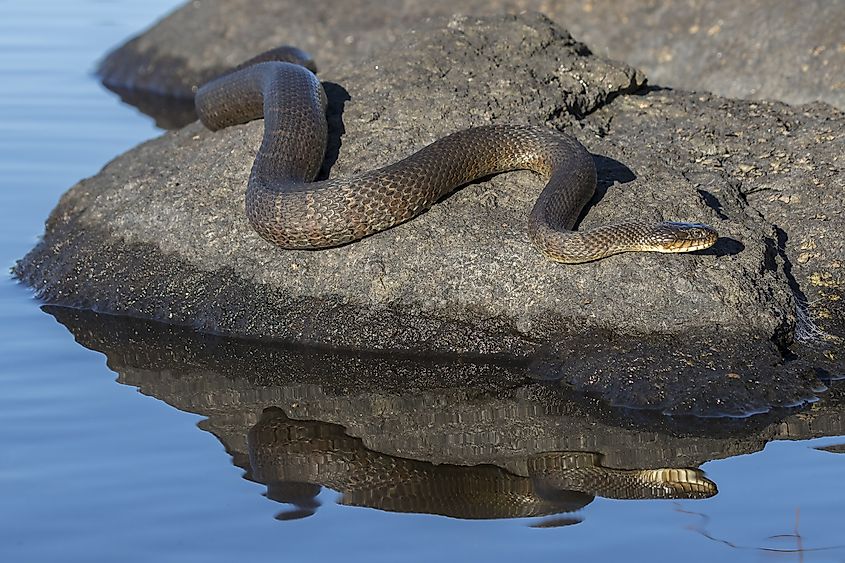
Water snakes feed mostly on fish and amphibians and are often confused with their venomous cousins, Water Moccasins or Cottonmouths (Agkistrodon piscivorus) as they have similar markings. Both the Diamond-Backed and Northern Water Snakes are, however, non-venomous.
Lewis And Clark Lake
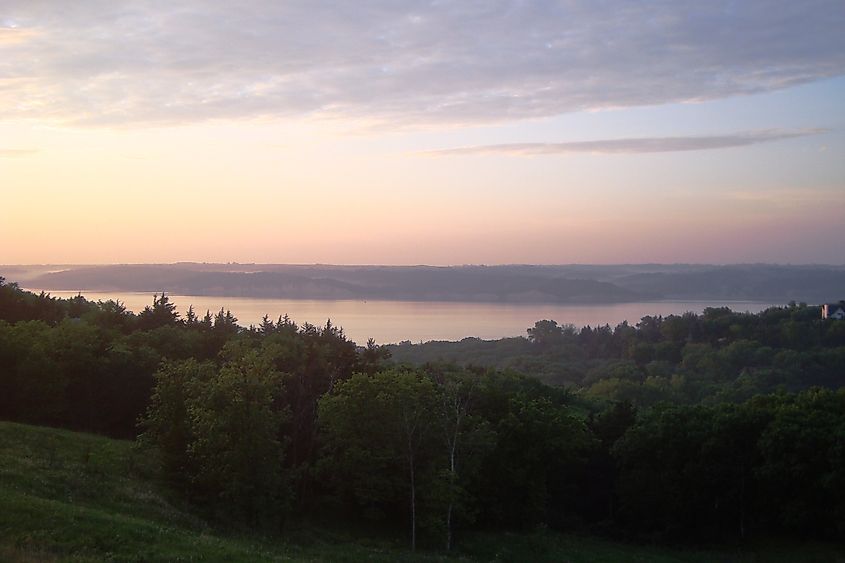
The second largest reservoir in Nebraska, 31,400 acre Lewis and Clark Lake, is in the northern part of the state, straddling the border with South Dakota. The famous explorers camped in this area as they made their way across the country and it’s still a popular camping spot today. The lake also offers hiking, swimming, boating, sailing, fishing, and kayaking.
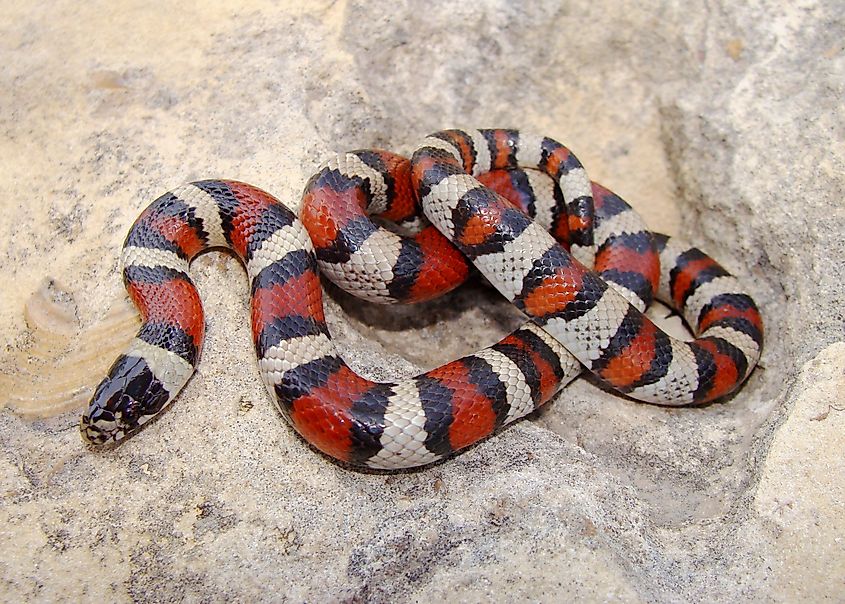
Lewis and Clark were known to have several encounters with rattlesnakes during their expedition and it’s possible they encountered them in the area around the lake named after them. The rocky and sandy soils in this area support a number of snake habitats including those of the Prairie Rattlesnake, Plains Milk Snake (Lampropeltis gentilis), and Great Plains Rat Snakes (Pantherophis emori).
Being Snake Smart
The rule with snakes, as with all wildlife, is to let them be. If you encounter snakes while enjoying any of the recreation areas above, give them a wide berth and definitely don’t disturb them. Even if a snake appears to be dead, don’t touch it. Some species, like the Hog-nosed Snake, will play dead as a defensive tactic and venomous snakes can still bite and release their venom after death.
Be aware that snakes are most active during the warmer months. If you’re hiking through areas like tall grass or rocky shoreline, wear closed shoes and long trousers to avoid an accidental bite. If you bring a pet, make sure it’s on a leash. With these simple, common-sense precautions, it’s possible for visitors and snakes to happily coexist and enjoy the many beautiful recreation areas Nebraska has to offer.

